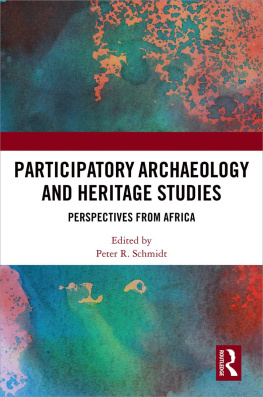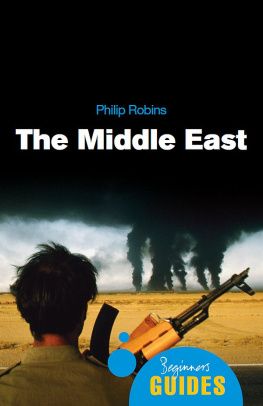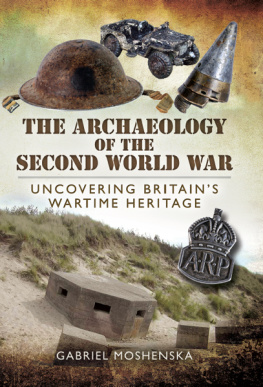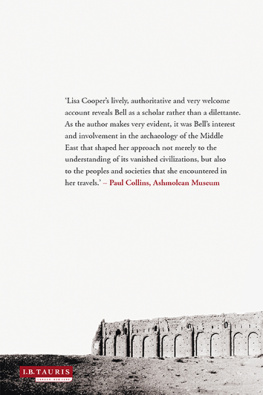
Historical Archaeology and Heritage in the Middle East
Landlord villages dominated Iranian land tenure for hundreds of years, whereby one powerful landlord owned the village structures, surrounding farmland, and, to all intents and purposes, the village occupants themselves; a system that in some cases remained in place up to the 1979 Islamic Revolution. In Oman, mud brick oases were home to most of the rural population right up until Sultan Qaboos came to power in 1970 and required inhabitants of mud brick houses to relocate into new concrete block buildings.
Historical Archaeology and Heritage in the Middle East explores these everyday rural communities in Iran and Oman in the 19th and 20th centuries, through a combination of building analysis, excavation, artefact analysis and ethnographic interviews. Drawing on the results of original field projects, the book considers new ways of exploring traditional lifeways, giving voice to hitherto largely ignored sections of the population, and offers new and different ways of thinking about how these people lived, what shaped their lives and the impact of major political and social changes on them. Place, memory, and belonging are considered through the lens of material culture within these villages.
The first of its kind, the book brings together methodologies, research questions, and themes that have never previously been used or addressed in the Middle East. Helping to establish historical archaeology in the Middle East and providing new ways in which the memorable quotidian past can be exploited for its social and economic value in contemporary community and heritage developments, this is an ideal resource for students, scholars, and practitioners of historical archaeology and the heritage of and in the Middle East.
Ruth Young is a Reader in Archaeology at the University of Leicester, UK. She is interested in the historical archaeology and heritage of the Middle East and South Asia and has directed and co-directed excavations and fieldwork in Iran, Lebanon, Oman, and Pakistan. Her recent publications include Post-Conflict Archaeology and Cultural Heritage (2017), and The Archaeology of South Asia (2015).
Historical Archaeology and
Heritage in the Middle East
Ruth Young
First published 2019
by Routledge
2 Park Square, Milton Park, Abingdon, Oxon OX14 4RN
and by Routledge
52 Vanderbilt Avenue, New York, NY 10017
Routledge is an imprint of the Taylor & Francis Group, an informa business
2019 Ruth Young
The right of Ruth Young to be identified as author of this work has been asserted by her in accordance with sections 77 and 78 of the Copyright, Designs and Patents Act 1988.
All rights reserved. No part of this book may be reprinted or reproduced or utilised in any form or by any electronic, mechanical, or other means, now known or hereafter invented, including photocopying and recording, or in any information storage or retrieval system, without permission in writing from the publishers.
Trademark notice : Product or corporate names may be trademarks or registered trademarks, and are used only for identification and explanation without intent to infringe.
British Library Cataloguing-in-Publication Data
A catalogue record for this book is available from the British Library
Library of Congress Cataloging-in-Publication Data
A catalog record has been requested for this book
ISBN: 978-0-8153-9558-4 (hbk)
ISBN: 978-1-351-18350-5 (ebk)
Typeset in Sabon
by Swales & Willis Ltd, Exeter, Devon, UK
Mud brick is the story of the past and living in the past. (Female informant, 70 + , Bat, Oman)
To Paul Newson
Chapter 1
Chapter 2
Chapter 3
Chapter 4
Chapter 5
Chapter 6
Many individuals and institutions played a role in the project work for the two case studies this book is based on, and I would like to thank them all. This includes: the School of Archaeology and Ancient History, University of Leicester, including the various undergraduates and postgraduates who took part in fieldwork; the staff of the Iranian Centre for Archaeological Research, Tehran; Iranian Cultural and Heritage and Tourism Organisation; the Institute of Archaeology, University of Tehran and students from the Department of Archaeology, University of Tehran; the Islamic Azad University of Varamin-Pishva; the Heritage and Handicraft Institute, Varamin; Professor Hassan Fazeli; Hengameh Ilkmani; Minoo Salimi; Hossein Azizi Kharanaghi; Pooria Saeedi; Maryam Naeemi; Professor Robin Coningham (Durham University); all other students from Tehran and Varamin who helped on this project; and particularly all the former inhabitants of Kazemabad, Hosseinabad Sanghar and Gach Agach who gave generously of their time, knowledge, and experience; Dr Chris Thornton, Dr Charlotte Cable, Dr Yasuhisa Kondo of the American-Japanese Bat Archaeological Project; the Ministry of Heritage and Culture, Muscat, Sultanate of Oman, and, in particular, HE Salim bin Mohammed Al Mahruqi (Under Secretary for Heritage Affairs), Sultan Al-Bakri (Director of Excavations and Archaeological Studies), Mohmmad Al-Waili, Suleiman Al-Jabri, Asma al-Jassassi, Samia al-Shaqsi and Neil De Leon; Andy Hyam (ULAS); Alasdair Brooks; Paul Newson; and of course all the inhabitants of Bat who gave generously of their time, knowledge, and experience. Thanks to Professor David Mattingly and Professor Colin Haselgrove (University of Leicester) for critical reading and input, and to Professor Audrey Horning and Professor Uzi Baram for reviewing the proposal. Thanks to Susan Ripper for producing the figures.
Fieldwork in Iran and Oman has been funded by: the Anglo-Oman Society; the British Foundation for the Study of Arabia; the British Institute of Persian Studies; National Geographic; the Society for Post-Medieval Studies. Writing this book was made possible through the award of a British Academy Mid-Career Grant 20152016; the University of Leicester also provided research leave; the Department of History and Archaeology at the American University of Beirut provided affiliation status and access to their library.
Much of this book is based on interviews with former inhabitants of mud brick villages in Iran and Oman. In some instances, I use the first names of those involved (with their permission), but the majority of interviewees remain anonymous in the text, with only basic information about gender and age provided. This is to ensure the privacy of their thoughts and experiences.
The aims of this book
When I first began to think about a book based on my recent archaeological and ethnographic work in Iran and Oman, my main aim was to raise the profile of historical archaeology in the Middle East as an active and relevant pursuit with huge potential. For many reasons, which I explore throughout the book, historical archaeology is eminently suited as a framework for study in the Middle East, but it has not yet gained the understanding and academic credibility here that it has in Europe, North America, and Australia for example (Brooks and Young 2016). I think that this is largely because historical archaeology suffers from something of an identity crisis in the Middle East, as it is not proper archaeology, i.e., uncovering and bringing to life major prehistoric or early historic cities and civilisations; instead it deals with a recent past, often domestic or small scale, which many would assume should be covered by historians or sociologists. The challenge here is encapsulated in the word relevant. Archaeologists need to be able to demonstrate how historical archaeology is relevant not only to modern academia, but also to contemporary communities and governments, as this is critical for forming the basis of disciplinary development and expansion in the region. Historical archaeology offers a robust analytical framework to explore a recent, memorable past, which has direct relevance to current communities (Lucas 2015, 2006; Smith 2006). It provides a way of preserving and interpreting memories and transmitting them to current and future generations. It also provides a way of offering these memories as the basis for heritage developments that are rooted in community movements.








